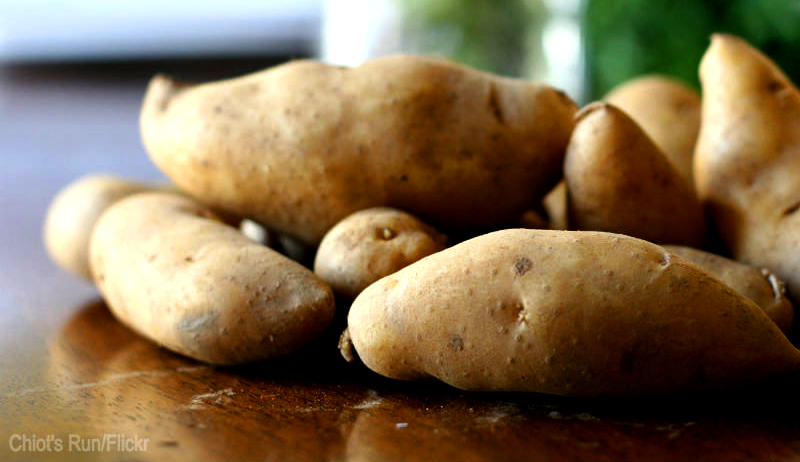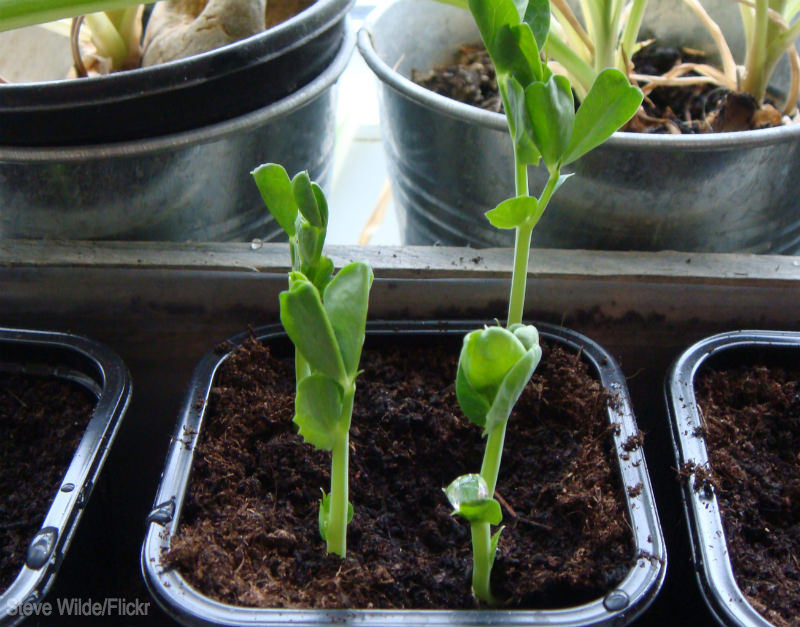
It’s a sweet sort of melancholy that drives the home gardener who puts summer garden beds to sleep. For those who have caught “the bug”—the insatiable, undeniable craving to conjure green things from the soil—a long winter can feel like an exquisite torture. Luckily, several foods can be grown indoors, even in the dead of a frosty winter. Here are a few of our favorites for indoor gardening.
1. Sprouts

How to Grow: Even if you live in a windowless box with no view of the outside world, you can still grow sprouts. They’re a great candidate for indoor gardening. Cover 2 tablespoons of sprouting seed in a wide-mouth quart jar with water. Let stand overnight, then strain the seeds through cheesecloth or a fine-mesh strainer (a strainer works better for tiny seeds). Return the seeds to the jar, add a little water and swish around to rinse the seeds, then strain again. Repeat this process twice a day until the first tiny leaves appear on your seeds. This may take from three to seven days depending on the variety of seed.
Cautions: The biggest risk to your sprout crop is mold. Rinse your sprouts at least twice a day, and once they’re grown, hold them in the refrigerator for no more than three days, wrapped in a paper towel.
How to Use: Slip into sandwiches or on top of salads, throw them into a smoothie, or use as a garnish on creamy winter soups.
2. Scallions

How to Grow: Scallions can be grown from the white root left over after using the green stalk. For indoor gardening, simply slice off the green part to use in cooking, but don’t cut into the white part of the plant. Now you can plant the root in a pot half-filled with loose potting soil. Leave about 2 inches between the roots. Just barely cover the roots with soil; it’s fine if they are peeking out a bit. Scallions like a good bit of sunlight, so place your pot in a sunny window. Keep the soil damp, but not soaking.
Cautions: Leave behind an inch or so of sprout each time you trim the plant so the sprout will continue to grow.
How to Use: Top tacos, dips, soups and salads with sliced scallions. They’re also a beloved ingredient in many Asian cuisines.
3. Salad Greens

How to Grow: Give yourself a little break and begin with quick-growing transplants from a garden supply shop. For indoor gardening, plant the starts into pots or window boxes with loose potting soil and place in a bright window or under grow lights. Trim back leaves as desired, always leaving the center of the plant to continue growing.
How to Use: Toss baby greens into salads along with sweet potatoes, nuts, cheese, pears and other cold-weather foods.
4. Kale

How to Grow: Kale can be grown much like salad greens. Give the plants a little more space to grow, but for indoor gardening, take the leaves as tender babies to minimize ongoing light and fertility needs.
Cautions: If you grow kale alongside salad greens under grow lights, make sure all the pots are the same height they receive the same amount of light.
How to Use: Add to salads and smoothies, or stir into bean and meat stews for added color and nutrition.
5. Carrots

How to Grow: Carrots work well for indoor gardening. Spread seeds on top of the potting soil and sprinkle evenly with water. Give your carrots plenty of room to grow according to their size—you can pack in more carrots if you plan to take them as babies. Keep the soil evenly moist and exert patience, as carrots can take as long as two weeks to sprout. Once the carrots have sprouted, thin to 1 inch apart in all directions. Pull the carrots straight up and out of the soil once they’ve reached full color.
How to Use: Seedlings can go straight into salads, while mature carrots make a delicious addition to soups and roasts.
6. Citrus Fruits

How to Grow: Choose deep pots slightly larger than the root ball. Fill with a potting soil specific to citrus trees. Citrus needs a lot of sunlight, at least eight hours per day but preferably 12 hours. Keep the soil on the dry side, but still evenly watered. Once the indoor gardening is done, citrus trees can move outside in the spring.
Cautions: Citrus appreciates a humid climate, so mist the leaves or place near a humidifier occasionally. Avoid shock in the spring by slowly acclimating the plant to the outdoors, providing shade for a few days before exposing to full sun.
How to Use: Citrus fruits are a gift in the winter, when they can apply their brightness almost anywhere—to fish and chicken, pies and cakes, sauces and marinades, and of course, eating out of hand.
7. Potatoes

How to Grow: Potatoes are another great candidate for indoor gardening; they can be grown inside a 5-gallon plastic container. Cut your seed potatoes into pieces with at least one eye in each piece and plant into 4- inches of topsoil mixed with compost, eye facing up. Potatoes should be planted 8 to 12 inches apart. Top with several inches of straw and place in a sunny window. After a couple weeks, the first shoots should appear through the straw. Keep the soil lightly moist but not soaking, and after several weeks, harvest baby potatoes from your box.
How to Use: Boil baby potatoes whole and toss with celery, carrots, vinegar and homemade mayo for a spring salad.
8. Pea Shoots

How to Grow: For indoor gardening, soaking dried pea seeds in a bowl of water for 24 hours before planting helps with germination. Drain the peas and plant them in compost, 1/2 inch deep. Peas don’t need a lot of room for root growth, so even shallow containers are acceptable. Peas can also be densely planted—just 1/4 inch is needed for shoots. Water evenly and place in a sunny window, and within two or three weeks you’ll have plenty of shoots for harvesting! Just pinch off above the bottom leaves.
How to Use: Pea shoots are deliciously sweet in salads and sandwiches.




